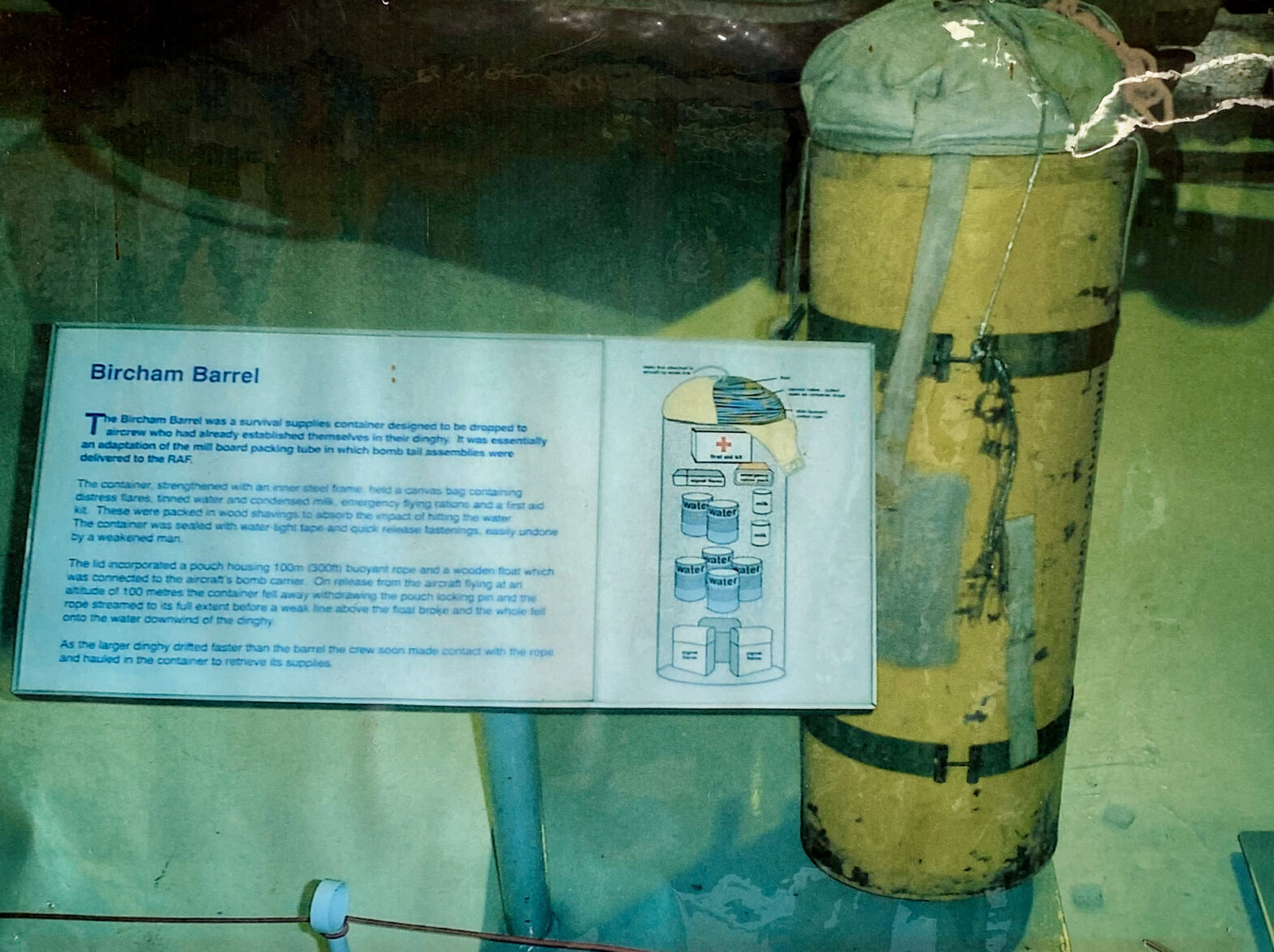Individual centres developed their own local solutions for dropping emergency gear to ditched crew.
The Thornaby Bag
This consisted of a strengthened fabric parachute bag using the kapok pads from a Mae West life jacket for flotation. The advantage of these bags was that all the components were readily available on the station. Individual bags were made, which contained watertight tins of food, drink, cigarettes and first aid equipment. The bag was never a great success because it was liable to burst on impact and, even when it didn’t, it was difficult to spot once it was in the sea. Nevertheless, it was better than no aids at all and some successes were achieved.
The Bircham Barrel
The Bircham Barrel overcame the weaknesses inherent in Thornaby’s fabric bag by employing a rigid container which could be carried on the bomb racks of the searching aircraft. It was made from the tail unit of a 250 lb bomb with a reinforced inner frame and an inner canvas bag, all made watertight. Once again, all the components were readily available on the station. Later developments made the barrel more conspicuous once it was in the sea and also allowed the ditched crew to retrieve it more easily. By September 1941 clearance had been given for it to be carried on a wide range of aircraft.
It soon became apparent that distressed aircrews needed something more than emergency rations to keep them alive until a ship arrived. Group Captain E F Waring, the Station Commander at RAF Lindholme who later worked on the Airborne Lifeboat, and who was to play a major role in the air/sea rescue arena throughout the war, invented and perfected an apparatus comprising a series of five containers. The largest of these, which was the tail unit of a 500 lb bomb, held the dinghy. The four smaller units contained, as in the Bircham Barrel, water, food and protective clothing. All five containers were linked together by floating ropes, which ditched aircrew could grasp and haul in. The advantage of this apparatus was its scale, and in particular the provision of a much larger dinghy of more robust construction, which was better able to withstand rough seas.
The Lindholme Gear proved its superiority and was commercially produced.
